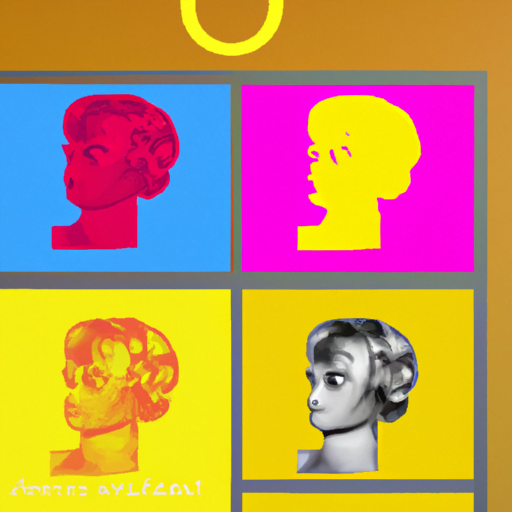
-
Table of Contents
Exploring the Concept of Emotional Intelligence in Design

Design is not just about aesthetics and functionality; it is also about creating experiences that resonate with users on an emotional level. Emotional intelligence, a concept popularized by psychologist Daniel Goleman, plays a crucial role in design. In this article, we will delve into the concept of emotional intelligence in design, its importance, and how it can be effectively incorporated into the design process.
Understanding Emotional Intelligence
Emotional intelligence refers to the ability to recognize, understand, and manage our own emotions, as well as the emotions of others. It involves empathy, self-awareness, self-regulation, motivation, and social skills. Emotional intelligence allows individuals to navigate social interactions effectively and make informed decisions based on emotional cues.
In the context of design, emotional intelligence is about understanding the emotional needs and responses of users. It involves creating designs that evoke positive emotions, establish connections, and ultimately enhance the user experience.
The Importance of Emotional Intelligence in Design
1. Building meaningful connections: Emotional intelligence in design helps establish a connection between the user and the product or service. By understanding the emotional needs and desires of users, designers can create experiences that resonate with them on a deeper level. This connection fosters loyalty and encourages users to engage with the design more frequently.
2. Enhancing user experience: Emotional intelligence allows designers to create experiences that go beyond mere functionality. By considering the emotional impact of design choices, designers can create interfaces, products, and services that are not only visually appealing but also evoke positive emotions. This enhances the overall user experience and makes it more memorable.
3. Increasing user satisfaction: Emotional intelligence helps designers anticipate and address the emotional needs of users. By understanding the emotions associated with specific tasks or interactions, designers can create solutions that alleviate negative emotions and enhance positive ones. This leads to increased user satisfaction and a higher likelihood of repeat usage.
Applying Emotional Intelligence in Design
1. User research and empathy: To incorporate emotional intelligence into the design process, it is essential to conduct user research and develop empathy for the target audience. This involves understanding their needs, desires, and pain points. By putting themselves in the users’ shoes, designers can gain valuable insights into the emotional aspects of the design.
2. Emotional journey mapping: Emotional journey mapping is a technique that helps designers visualize the emotional highs and lows users experience throughout their interaction with a product or service. By mapping out these emotions, designers can identify opportunities to enhance positive emotions and mitigate negative ones. This allows for a more emotionally engaging design.
3. Visual and sensory cues: Designers can leverage visual and sensory cues to evoke specific emotions in users. For example, the use of warm colors and soft textures can create a sense of comfort and relaxation, while bold colors and sharp lines can evoke excitement and energy. By carefully selecting and combining these cues, designers can create a desired emotional response.
4. Microinteractions: Microinteractions are small, subtle design elements that provide feedback and create moments of delight for users. By incorporating emotional intelligence into microinteractions, designers can evoke positive emotions and enhance the overall user experience. For example, a simple animation or a witty error message can turn a frustrating experience into a lighthearted one.
Case Studies: Emotional Intelligence in Design
1. Apple: Apple is known for its emotionally intelligent design approach. The company focuses on creating products that not only perform well but also evoke positive emotions in users. From the sleek design of their devices to the intuitive user interfaces, Apple designs aim to create a sense of delight and satisfaction.
2. Airbnb: Airbnb understands the emotional needs of its users and incorporates emotional intelligence into its design. The platform uses storytelling and personalized recommendations to create a sense of belonging and connection. By understanding the emotional desires of travelers, Airbnb has created a design that goes beyond mere accommodation booking.
Statistics on Emotional Intelligence in Design
- According to a study by the Design Management Institute, design-led companies outperformed the S&P 500 index by 219% over a 10-year period.
- A survey conducted by Adobe found that 73% of companies believe that design-driven experiences are key to their success.
- In a study by McKinsey, emotionally engaged customers were found to be three times more likely to recommend a product or service and three times more likely to repurchase.
Conclusion
Emotional intelligence plays a vital role in design, allowing designers to create experiences that resonate with users on an emotional level. By understanding the emotional needs and responses of users, designers can build meaningful connections, enhance user experiences, and increase user satisfaction. Incorporating emotional intelligence into the design process involves user research, empathy, emotional journey mapping, visual and sensory cues, and microinteractions. Case studies of companies like Apple and Airbnb demonstrate the effectiveness of emotional intelligence in design. As the statistics show, design-led companies and emotionally engaged customers tend to outperform their counterparts. By embracing emotional intelligence, designers can create designs that not only look good but also evoke positive emotions and leave a lasting impact on users.
